Nuclear research reactors
Nuclear research reactors do not generate electricity. Instead, they produce neutrons primarily for research, radioisotope production, and nuclear education and training. Since 1942, about 884 research reactors have been built in 71 countries. As of 2023, 227 reactors were operational in 54 countries, while 520 had been decommissioned or were undergoing decommissioning.1 Data PNG Embed […]
What happens to low level nuclear waste in the United States?
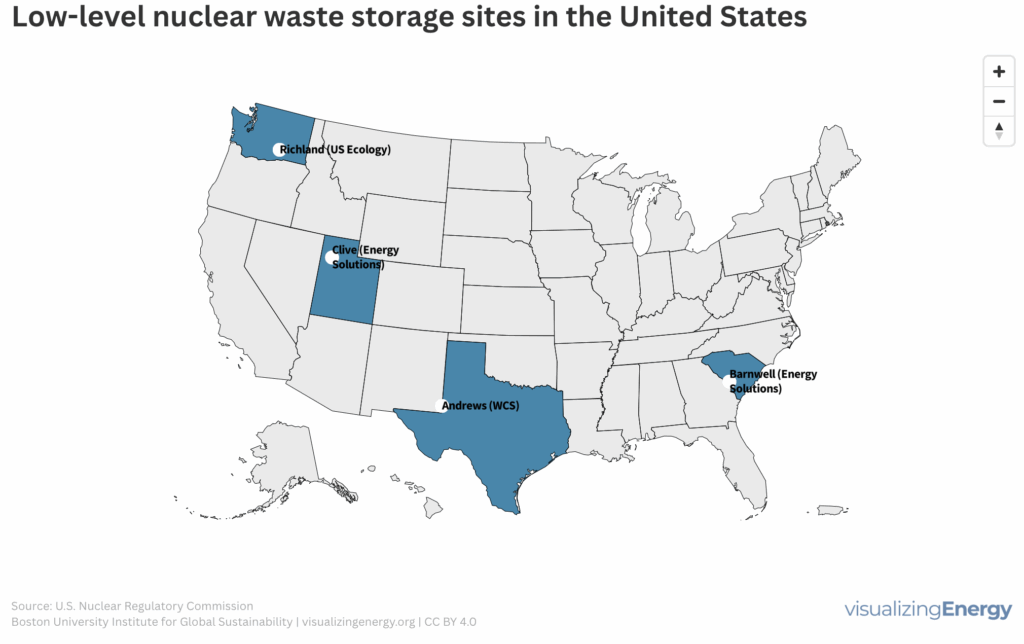
Low-level radioactive waste (LLW) is produced by various commercial operations and the U.S. Department of Energy. It includes contaminated materials like clothes, tools, and medical supplies. LLW is typically stored on-site until it decays or is shipped to disposal sites, regulated under the Low-Level Radioactive Waste Policy Act of 1980.
Global nuclear power capacity additions
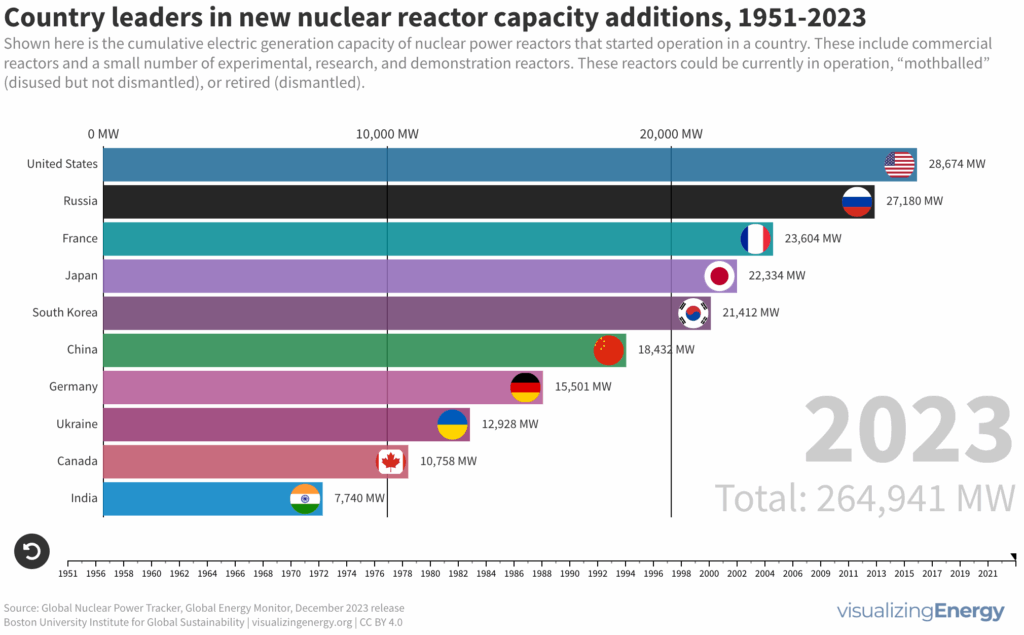
Nuclear power plants have a nameplate capacity of about 390 gigawatts and supply 10% of the world’s electricity. The United States, Russia, France, Japan, South Korea, and China account for 36% of global capacity. Capacity additions have declined due to accidents, rising costs, public opposition, and the increasing attractiveness of renewable power generation.
Electricity generation from nuclear power

In 2024, 440 nuclear power reactors operated in 32 countries, generating 10% of the world’s electricity. The US, China, France, Russia, and South Korea are the top generators. France leads in nuclear power usage (63%), followed by Slovakia, Hungary, Belgium, and Slovenia. Ukraine’s nuclear operations were impacted by the 2022 Russian invasion, causing fluctuating reactor activity.
Global nuclear reactor startups and retirements, 1951-2024
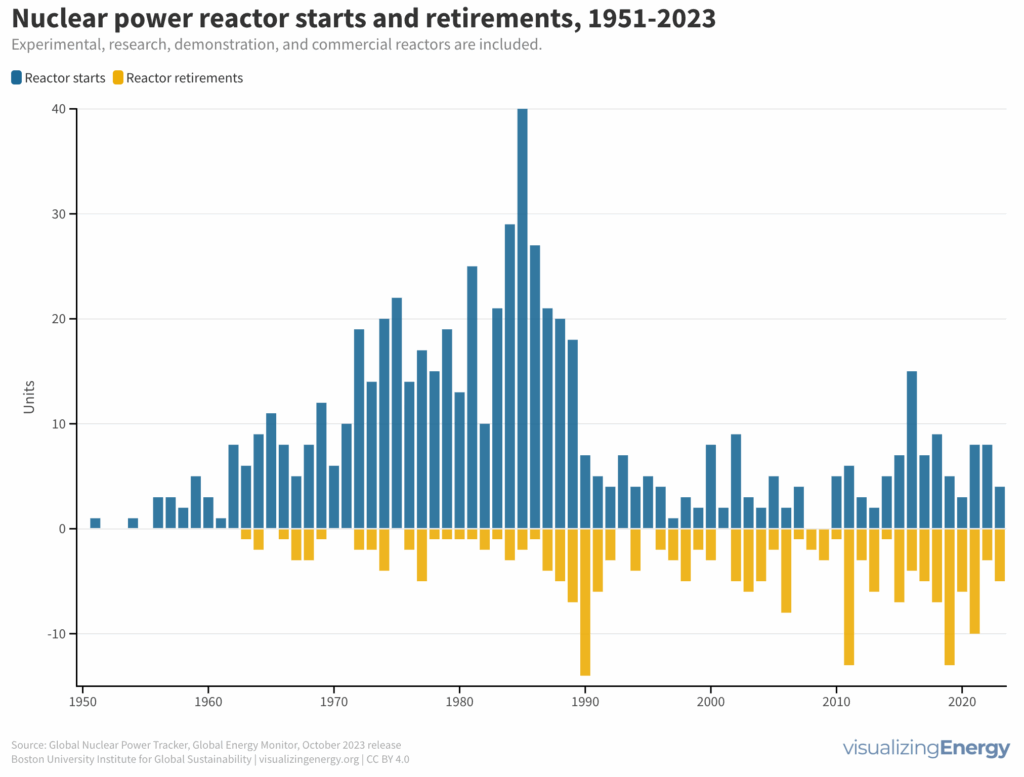
The global nuclear power industry has experienced significant shifts since its post-WWII expansion, with a sharp decline in new reactor starts from the 1990s onwards. More recently, some countries have sought to replace fossil fuels with nuclear power to address emissions and energy security. However, challenges remain in demonstrating the promised benefits of new reactor designs.
Global nuclear reactor construction starts and duration, 1949-2023
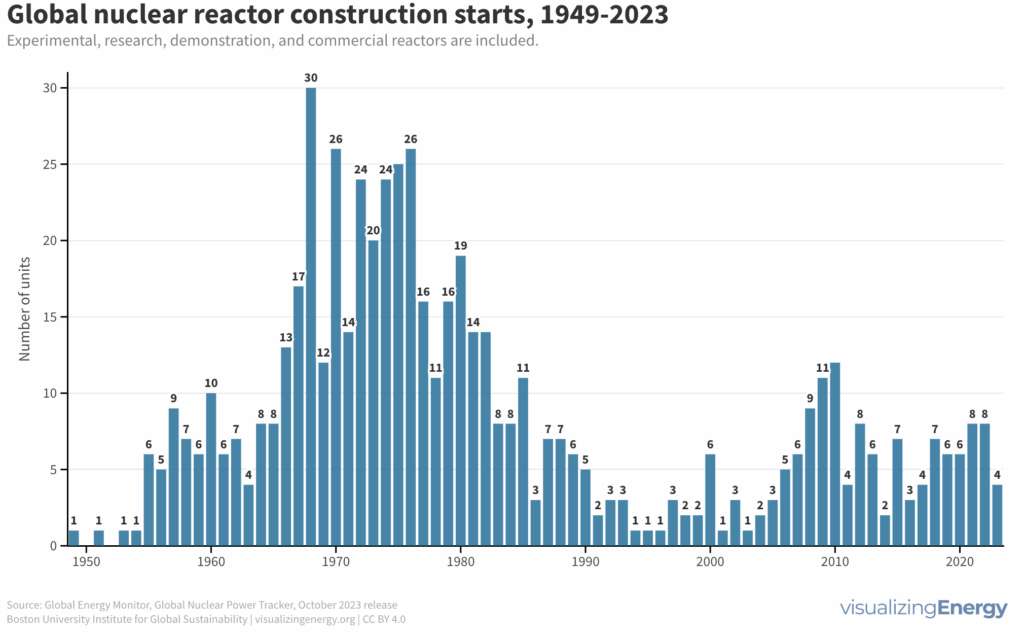
The construction of new nuclear power plants reflects changing electricity demand and technology competitiveness. Despite industry and government support, nuclear power faces challenges such as cost-competitiveness and safety concerns, leading to extended construction times. While some advocate for its expansion as vital for clean energy transition, others question its necessity due to declining global electricity share and the rise of cheaper renewables.
The aging of the world’s nuclear reactors

The construction of nuclear reactors peaked in the 1970s, leading to an aging global reactor fleet. The push to relicense these aging reactors has economic and energy security benefits, but questions remain about safety. More data and transparency are needed for informed decision-making in the face of the world’s aging nuclear fleet.
What is nuclear power uprating and why is it important?
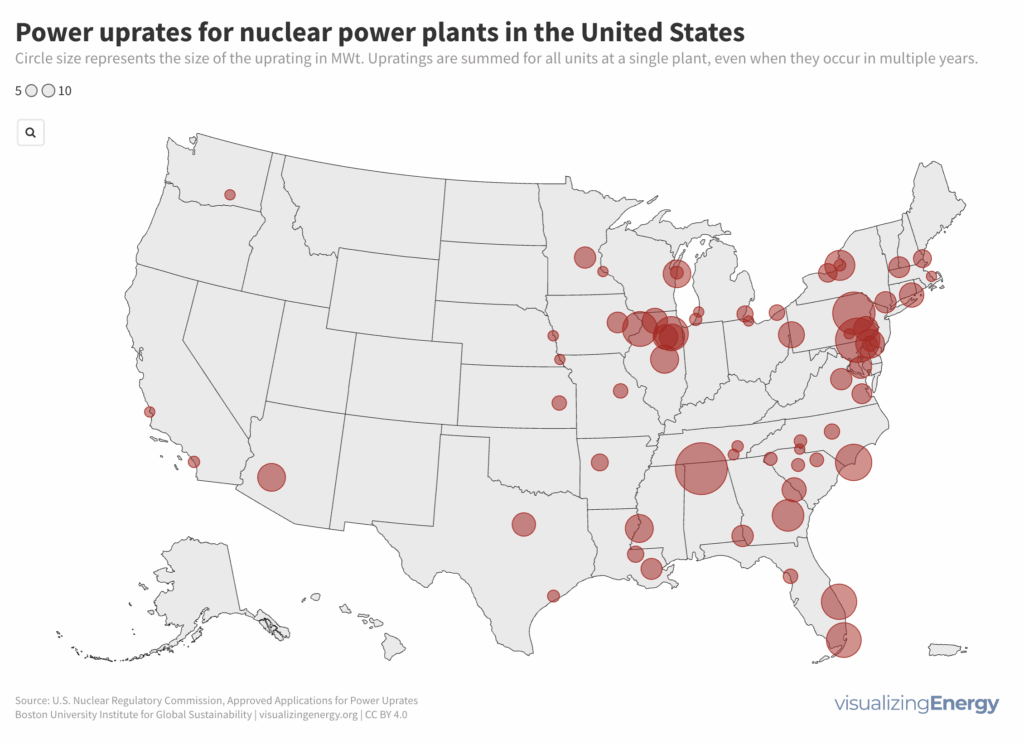
Nuclear power in the US has steadily contributed 19% of electricity since 1990, mainly through uprates. These uprates, approved by the NRC, have boosted capacity by 24,080 MWt or 8030 MWe, equivalent to over 7 new plant units. Most uprates range from 0-5%.
Watch the history of nuclear power in the U.S.

In 2022, the U.S. had 92 nuclear power plants generating 18% of total electricity. The industry, once a major player, declined due to high costs, long construction timelines, decreased demand, accidents, regulations, and market deregulation. There’s renewed interest in nuclear power to combat climate change, with the first new plant in 30 years, though debates continue on cost, safety, and alternative energy sources.
Explore the world history of nuclear reactors, 1951-2022

Explore the global history of nuclear reactors from 1951 to 2022. This visualization showcases 626 operational reactors, highlighting the dominance of pressurized light water reactors (PWRs). Different reactor types exhibit geographic patterns, with retired reactors and ongoing upgrades observed in various countries. The average age of reactors in the United States was 41 years in 2021.
